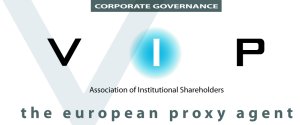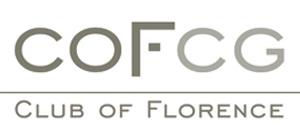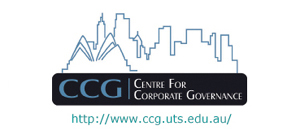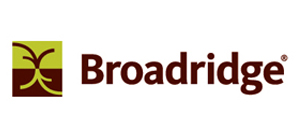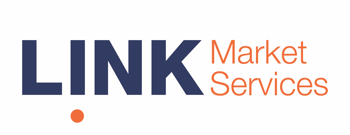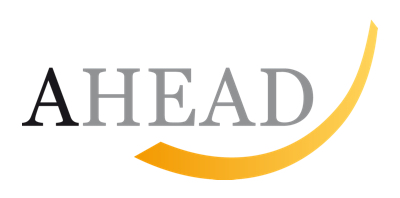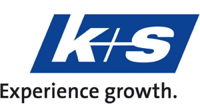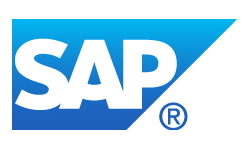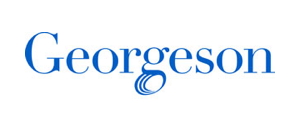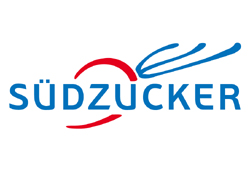Campus
Supervisory-board pay up nine percent
 According to an analysis by Towers Watson, a total of eight DAX companies have used the 2011 AGM season to adjust the pay of supervisory-board members. Here, a stronger and long-term sustainability of the compensation was taken into account, as suggested in the German Corporate Governance Code. Last year supervisory-board members earned on average around 0.3 million euros, representing an increase of nine percent over the previous year. With the increase in compensation, companies were responding “not least to increased demands on supervisory activities,” according to the consultant. Towers Watson sees Ferdinand Piëch with €785,500 at the top, with Gerhard Cromme estimated at €584,000. At Fresenius Medical Care (138,000) and Deutsche Post (149,000), the supervisors earn the least.
According to an analysis by Towers Watson, a total of eight DAX companies have used the 2011 AGM season to adjust the pay of supervisory-board members. Here, a stronger and long-term sustainability of the compensation was taken into account, as suggested in the German Corporate Governance Code. Last year supervisory-board members earned on average around 0.3 million euros, representing an increase of nine percent over the previous year. With the increase in compensation, companies were responding “not least to increased demands on supervisory activities,” according to the consultant. Towers Watson sees Ferdinand Piëch with €785,500 at the top, with Gerhard Cromme estimated at €584,000. At Fresenius Medical Care (138,000) and Deutsche Post (149,000), the supervisors earn the least.
German board members at the top for liability
Germany, according to Noerr LLP, is the country in Europe with by far the largest exposure to loss for directors and Management and Supervisory Board members. According to Oliver Sieg of Noerr this applies to both the amount of damage claims and the loss frequency. Sieg finds banks, publicly controlled companies and companies in crisis to be particularly affected. An increasing number of cases were also in the public eye: currently there are claims in the hundreds of millions of dollars against ex-managers, especially in connection with the financial crisis.
The population distrusts managers
In a survey commissioned by Hostettler, Kramarsch & Partners among 1000 Germans, 70 percent of the population stated they perceived excessive bonus payments to managers as a system problem and did not assess excesses as individual cases. Only 22 percent are satisfied with the current legal framework. In the consultancy’s view, while German companies had complied with the new statutory regulations for the design of compensation schemes and to some extent even gone beyond that, it had not been possible to produce “an understanding of our economic system” in the population.
Cross-listings have no added value
For long, an overseas listing in the United States for German companies was at a premium. Favourable capital-market conditions and increased market capitalization were associated with it. A recent scientific study by the Justus-Liebig University of Giessen and the University of New Hampshire has looked at the motivation for the listing and delisting of German firms on the NYSE and the NASDAQ. The authors, Professor Dr. Wolfgang Bessler, Professor Fred R. Kaen, Philip Kurmann and Jan Zimmermann, note that a so-called cross-listing for German companies in the U.S. brought no significant advantages in terms of cost of capital or market capitalization. On the contrary, after simplification of the rules for withdrawing from the U.S. stock market many German companies gave up their cross-listing there. This trend was also favoured by amended German corporate-governance rules and the proliferation of alternative trading platforms. The full working paper, titled “The Listing and Delisting of German Firms on NYSE and NASDAQ: Were There Any Benefits?”, is available under http://ssrn.com/abstract=1928784.
More IR on the social Web
The University of Leipzig study “Investor relations 2.0 - An international benchmark study” examined the 30 leading companies in the benchmark indexes in Germany, the USA, Great Britain, France and Japan (DAX, DJIA, FTSE, CAC and Nikkei), and additionally the German indices MDAX, SDAX and TecDAX, on how these 280 companies adapt their investor-relations activities to new forms of communication on the Web and integrate social media like Facebook, Twitter, YouTube or SlideShare. Here, the German and U.S. companies were already investigated in 2009, so that the current study was designed as a long-term study. The most popular of the social media is consistently Twitter, followed by YouTube and Facebook. In Germany, particularly companies in the second and third ranks, i.e. from the MDAX, SDAX and TecDAX, expanded their activities in the field of social media. The actual way of using the new communication forms differs considerably, however. For instance, Walmart puts the shareholder meeting online and the German ElringKlinger offers a live chat with the CEO. The conclusion of the study sees the social media and the integration of new forms of communication into IR on the rise. The spearhead is formed by the U.S. blue-chips, while German companies are currently ahead of French, Japanese and British companies. The majority of the companies rely on multiple forms of social media and make their performances multimedia and interactive. However, networking and dialogue with shareholders often falls short.
AGM attendance decreases
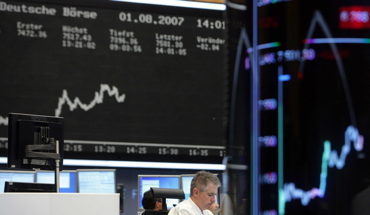 The shareholders of the largest German companies have in the past season tended to show lower interest in their company’s annual general meeting, says a summary by shareholder association Schutzgemeinschaft der Kapitalanleger (SdK). Although the average AGM attendance for the 30 DAX companies was slightly up at 56.45 percent, this slight gain was thanks to the two positive outliers adidas (up 11.26 percentage points) and Allianz (up 8.04 percentage points). At 15 DAX stocks attendance rates fell, at Henkel by 13.55 percentage points and at Metro by as much as 19.30 percentage points. After four years of rising attendance in the MDAX, the value went down by 0.86 percentage points in 2011 to an average attendance of 63.59 percent. In the TECDAX, the rate fell by as much as 6.4 percentage points to an average of 44.77 percent - a record low. Only in the SDAX did interest increase, to 64.22 percent, following a decline in the previous year by 3.24 percentage points. The trend thus reduces the duration of the meetings. On average, a DAX AGM took 7.04 hours, an MDAX one AGM 4.76 hours, a TECDAX one 4.11 hours and a SDAX one 3.66 hours. Against the backdrop of declining shareholder interest in the events of their company’s AGM, the SdK is calling on the German government to strengthen AGM attendance. One means is an attendance bonus. In this case, those shareholders who exercise their voting rights would be financially better off. According to the motto “property has its obligations,” this attendance bonus should concretely demonstrate non-voting with an “absence penalty”.
The shareholders of the largest German companies have in the past season tended to show lower interest in their company’s annual general meeting, says a summary by shareholder association Schutzgemeinschaft der Kapitalanleger (SdK). Although the average AGM attendance for the 30 DAX companies was slightly up at 56.45 percent, this slight gain was thanks to the two positive outliers adidas (up 11.26 percentage points) and Allianz (up 8.04 percentage points). At 15 DAX stocks attendance rates fell, at Henkel by 13.55 percentage points and at Metro by as much as 19.30 percentage points. After four years of rising attendance in the MDAX, the value went down by 0.86 percentage points in 2011 to an average attendance of 63.59 percent. In the TECDAX, the rate fell by as much as 6.4 percentage points to an average of 44.77 percent - a record low. Only in the SDAX did interest increase, to 64.22 percent, following a decline in the previous year by 3.24 percentage points. The trend thus reduces the duration of the meetings. On average, a DAX AGM took 7.04 hours, an MDAX one AGM 4.76 hours, a TECDAX one 4.11 hours and a SDAX one 3.66 hours. Against the backdrop of declining shareholder interest in the events of their company’s AGM, the SdK is calling on the German government to strengthen AGM attendance. One means is an attendance bonus. In this case, those shareholders who exercise their voting rights would be financially better off. According to the motto “property has its obligations,” this attendance bonus should concretely demonstrate non-voting with an “absence penalty”.
Investment professionals look to the Web
 From March to April the DVFA (German Association for Financial Analysis and Asset Management) together with Deutsche EuroShop asked 74 European investment professionals, including asset managers as well as buy- and sell-side equity analysts, about their use of new media. Compared to the traditional business media coverage in both print and digital form, which at least about 80 percent saw as an important source, about 15 percent of respondents said that they read news on blogs, message boards or social networks. But interest in traditional media messages available online increased. While only a few themselves write posts on blogs, social networks or message boards, for more than two-thirds of the respondents postings on these channels are a basis for further research. However, 86 percent assess the importance of this information as rather low. Among social networks Xing dominates, followed by LinkedIn, YouTube, Twitter and Facebook. Despite all the skepticism, all the same, 45 percent of respondents said that the new social media could probably have a greater role in investment decisions in the future.
From March to April the DVFA (German Association for Financial Analysis and Asset Management) together with Deutsche EuroShop asked 74 European investment professionals, including asset managers as well as buy- and sell-side equity analysts, about their use of new media. Compared to the traditional business media coverage in both print and digital form, which at least about 80 percent saw as an important source, about 15 percent of respondents said that they read news on blogs, message boards or social networks. But interest in traditional media messages available online increased. While only a few themselves write posts on blogs, social networks or message boards, for more than two-thirds of the respondents postings on these channels are a basis for further research. However, 86 percent assess the importance of this information as rather low. Among social networks Xing dominates, followed by LinkedIn, YouTube, Twitter and Facebook. Despite all the skepticism, all the same, 45 percent of respondents said that the new social media could probably have a greater role in investment decisions in the future.

